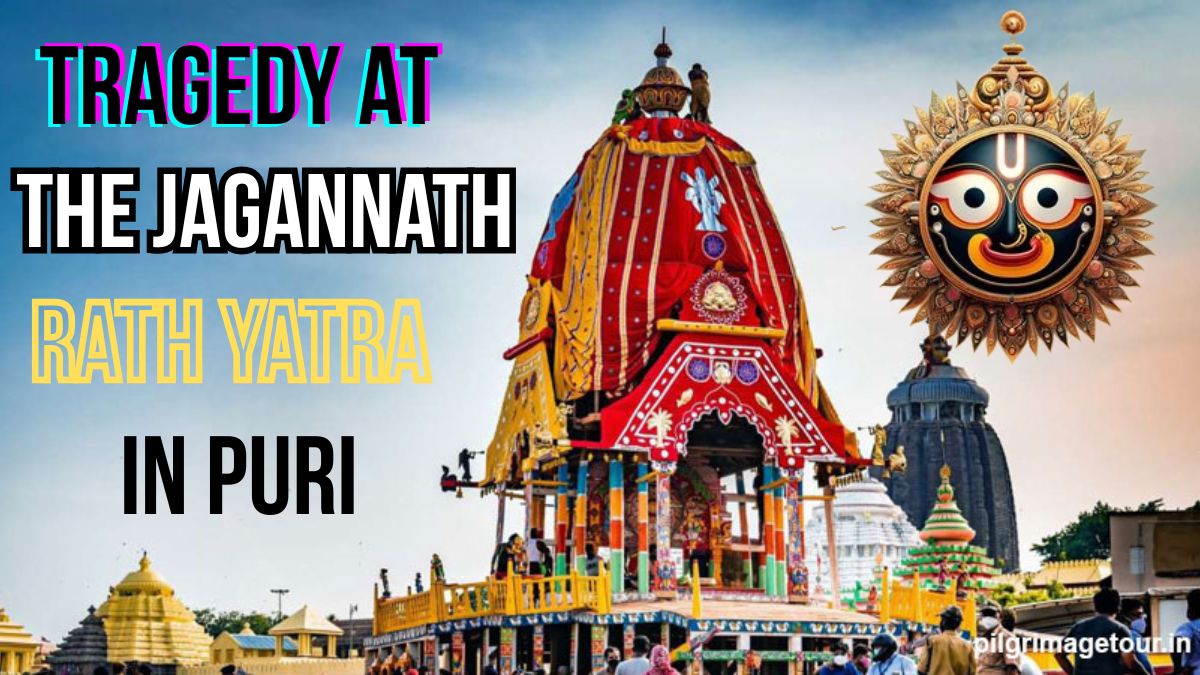The Jagannath Rath Yatra, one of the most celebrated and expected celebrations in India, turned terrible this year. Early reports from June 29, 2025, verify an awful stampede at the Gundicha Temple in Odisha’s Puri. This incident has actually left 3 individuals dead, lots hurt, and raises important questions about crowd management and security measures during large-scale spiritual gatherings.
This blog checks out the occasions surrounding the stampede, its ramifications, and the broader lesson it holds for arranging huge cultural and spiritual events.

Overview of the Incident
What Happened?
The stampede took place near Gundicha Temple around 4 to 5 am, when the 3 spiritual chariots bring the divine beings of Lord Jagannath, Lord Balabhadra, and Goddess Subhadra were being pulled by enthusiasts. An enormous crowd had actually collected for “darshan,” swelling beyond the temple’s carrying capability. Eyewitnesses recount disorderly moments when overloaded barriers caused individuals to fall, leading to the terrible stampede.
Casualties
Three devotees, including Basanti Sahu (36 ), Prabhati Das (42 ), and Premakant Mohanty, lost their lives.
Injuries: Over 50 others sustained injuries, with a minimum of 6 in important condition.
The injured were rushed to neighboring health centers. Some are reported to have struggled with suffocation while others sustained traumatic injuries.
The Challenges of Crowd Management at the Rath Yatra
Unprecedented Crowds
The Rath Yatra draws in millions of followers, both domestic and worldwide, each year. Over 10 lakh individuals attended the occasion this year, creating considerable logistical difficulties for managing the inflow and outflow of visitors.
Reports of Mismanagement
Several elements of inadequate crowd control and planning emerged throughout the event.
Inadequate Police Presence
Eyewitnesses reported a lack of appropriate cops deployment, especially at critical choke points.
Poor Traffic Control
Unauthorized automobiles close to the temple areas interrupted motion, intensifying blockage and creating additional turmoil.
Barriers and Emergency Exits
Barriers collapsed under the pressure of the crowd, enabling no appropriate exit points in case of emergencies.
VIP Routes
Last-minute rerouting for VIP access was another source of confusion, constricting paths for the general guests.
Wider Lessons on Event Safety and Crowd Dynamics
Advanced spiritual and cultural occasions like the Rath Yatra require robust preparation and execution to prevent disasters. Here are key takeaways to enhance security throughout mass gatherings:
Advanced Technology for Crowd Monitoring
Utilizing Artificial Intelligence (AI) for real-time crowd monitoring can help authorities predict traffic jams before they intensify. Drone monitoring and AI-enabled heat maps work tools.
Emergency situation Protocols
Setting up several clearly marked fire escape and releasing rapid-response medical teams at tactical points is important.
Restricting Crowd Size
Executing ticketed entry and monitoring attendee numbers using RFID or bracelet scanning could assist control the density of crowds.
Public Communication
Supplying real-time updates on crowd conditions through live apps or statements can assist direct people to less crowded locations.
Spiritual Festivities Should Never Be Life-Threatening
Festivals like the Rath Yatra are essential cultural moments that unite communities in dedication. However, careful planning and an emphasis on precaution are essential to guarantee these joyous gatherings stay inclusive and safe for all.
The tragedy at Gundicha Temple advises event organizers around the world of their obligation to focus on security above all else, particularly during massive occasions. Progressing, a thorough examination into whether organizers followed safety protocols will be vital. Stronger policies customized to handling huge events will likewise be crucial.
frequently Asked Questions (FAQs)
1. What precaution should be in location for massive occasions?
Event organizers should guarantee proper crowd management, establish numerous emergency exits, have medical assistance easily available, and carry out risk evaluations to determine potential hazards.
2. How can occasion organizers develop inclusive environments?
Inclusivity can be achieved by promoting availability, respecting varied cultural practices, avoiding prejudiced policies, and making sure interaction materials are readily available in numerous languages.
3. What function does staff training play in occasion security?
Well-trained personnel members are essential for managing emergency situations, assisting attendees, and guaranteeing that safety procedures are followed effectively throughout the occasion.
4. Why is monitoring crowd density essential?
Keeping track of crowd density assists prevent unsafe overcrowding, which can lead to stampedes or mishaps, ensuring guests can move easily and securely.
5. How can innovation assist in handling big gatherings?
Technology like real-time crowd tracking systems, mobile apps for participant communication, and automated alert systems can enhance security steps and improve occasion management performance.
The Jagannath Rath Yatra, one of the most expected and celebrated festivals in India, turned awful this year. This occurrence has actually left 3 people dead, lots hurt, and raises critical concerns about crowd management and safety measures throughout large-scale spiritual events.
A massive crowd had actually collected for “darshan,” swelling beyond the temple’s carrying capability. The catastrophe at Gundicha Temple reminds occasion organizers throughout the globe of their responsibility to focus on security above all else, particularly during large-scale occasions. Moving forward, a comprehensive investigation into whether organizers followed security protocols will be necessary.
For More Information Click Here